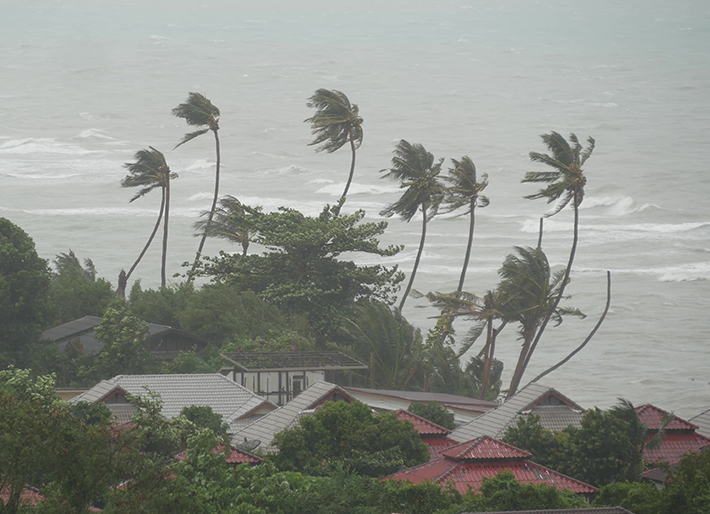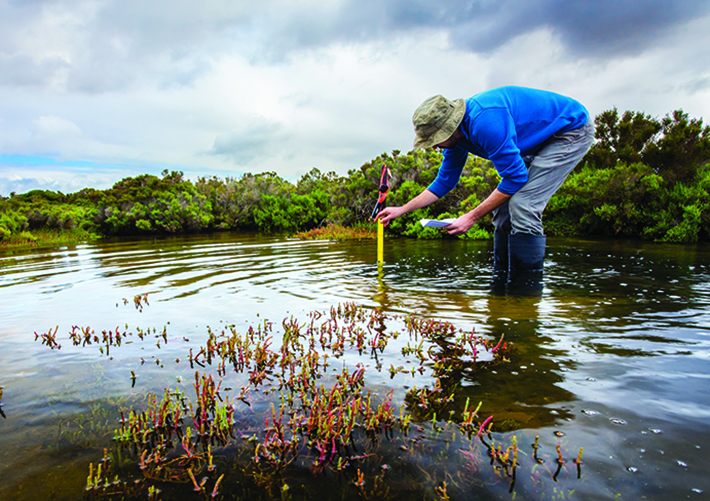
Climate and Community
A recent video from “The Guardian” compressed a month of extreme weather events in under four minutes: flooding in Europe, Asia, and the United States; tornados in Canada; landslides in India; deadly high temperatures in western North America; wildfires in Siberia.1 And that’s just some of what has happened in recent weeks.
All of these situations take a human toll, which can also be seen in the video. Extreme weather can take lives and increase health risks.
Much has been done to address the different aspects of extreme weather. Over the years, research has been done and data have been collected and studied in an attempt to measure the impact of extreme weather on communities around the world. And much work continues to be done.
READ MORE: 5 Standards that Support Resilience
Now, a new subcommittee (E50.07) has started work on standards needed to address the connections between climate and community. The subcommittee, part of the committee on environmental assessment, risk management, and corrective action (E50), has task groups already in gear on terminology, mapping, and ESG (environmental, social, governance). The task groups have been writing draft scopes and outlining their planned documents ahead of meetings scheduled for October.
Barbara Maco, of the Sustainable Remediation Forum, serves on the subcommittee and leads one of its task groups. She says, “The time is now for a consensus-driven, public-private collaboration. We have the political will and proposed financial resources. It’s very important that we have a comprehensive, science-defensible approach to focus these resources.”
A Subcommittee on Climate and Community
Helen Waldorf, an environmental professional with many years of experience from work at the Massachusetts Department of Environmental Protection and the U.S. Environmental Protection Agency (EPA), is chair of the new subcommittee. She says of the group, “It is an extension of a risk-based approach” already ingrained in standards on environmental site assessments, compliance, carbon disclosures, and more that the E50 committee oversees. (A recent addition to the committee’s standards portfolio is the guide for remedial action resiliency to climate impacts E3249, which outlines various techniques for evaluating and mitigating the impacts of climate change and weather extremes on remediation systems, activity and use limitations, stewardship, and remediation activities.)
Waldorf adds that the new subcommittee and the standards it develops will provide a consensus approach in addressing the challenges and connections between climate and community.
Think of the impacts of wildfire smoke; exposure to hazardous substances; food and water shortages. Add energy shortages as well as changes in infectious agents, population displacement, health-related illnesses, cardio, pulmonary illness, food, water, vector-borne diseases, mental health consequences, and stress. These are all considerations for the subcommittee.
Stephanie Fiorenza, Ph.D., is a remediation technology specialist and consultant based in Houston, Texas. She notes that “The subcommittee provides a space to allow the acknowledgement of the impact of climate changes on different communities and community resources, be it general adaptation procedures, remediation, or water resources in what might be called environmental justice — the impact of how climate can differentially impact communities.”
Begin with Terminology
One of the subcommittee’s first steps is to ensure that members are speaking the same language. They are beginning work on a terminology standard, which will define terms related to climate phenomenon, extreme weather impacts on human communities, and corrective responses to these impacts.
As Waldorf puts it, “This subcommittee has to figure out: How do we talk about this? There are a bunch of climate terms being thrown around, terms like environmental justice and equity, a whole bunch of different things,” she says.
When you have 60+ members from various professional backgrounds who serve in different industries, common terminology becomes even more important. Their work will be a resource for, and an integral part of, other standards developed by the subcommittee.

Weather impacts different communities in different ways.
Mapping
The next step on the agenda, and a topic for another task group, is mapping. Waldorf explains: “Now that we're figuring out how to talk about it, where is it? Where are the problems? I suspect it’s people who live on lands that don't have a very high real-estate value. It’s industrial areas. It's in flood areas, it's in areas that have very poor infrastructure, not enough good roadways, without energy reliability, and so on.”
That purpose — to figure out where problems exist, where risk is high, and to pinpoint those areas — is the focus of the community and mapping task group. This guide (WK76938) will facilitate a standardized approach for data-driven climate and economic justice screening tools to identify communities threatened by the cumulative impacts of climate, racial inequality, and “multi-source environmental pollution.” This approach will help users (especially local governments) identify and prioritize communities at risk with the goal of mitigating the impacts and strengthening community resilience.
Maco cites studies that have mapped city neighborhoods and climate. Findings reported in The New York Times last year indicate that “areas where lower income black and Hispanic residents live are five degrees F hotter in the summer, on average. In some cities, the difference in temperature can be 12 degrees F.2 Further, a July 2021 research report documented that these race and class disparities are found in more than 70% of counties across the United States.3
Fiorenza notes that the EPA’s EJSCREEN tool provides general environmental and demographic information, such as the location of nearby hazardous-waste sites and percentile of the population who have a high school diploma, when searching a location. Another EPA tool, Climate Resilience Evaluation and Awareness – Risk Assessment Application for Utilities (CREAT), is designed to help utilities better understand current and long-term weather. The tool helps users think about what problems extreme weather events pose, what needs to be considered and protected, and reporting costs and benefits related to risk reduction.
The scope of WK76938 explains how the CREAT “tool helped lay the framework for the community-driven initiative Proctor Creek Watershed Atlanta Georgia Green Infrastructure and Health Story Map.” To help manage stormwater there, a watershed green infrastructure project includes several completed, in progress, and planned components to reduce or prevent flooding and urban heat island effects.
With a standard that takes such tools and their use into account, stakeholders will have a broad document to assess the impact of climate on vulnerable communities and strengthen these communities’ resilience.
Disclosures: ESG
A third task group is taking on environmental, social, and governmental (ESG) disclosures with a draft guide as to how they relate to climate and community.
In the area of disclosures and disclosure policies, countries worldwide have differing requirements and guidelines. What they have in common is an increasing interest in such information as well as recent policies being implemented.
In the European Union, the Sustainable Finance Disclosure Regulation came into effect in March of this year. Its purpose is to promote responsible and sustainable investments. And, as S&P Global describes it, “How do my investment choices impact the planet? This is the simple question at the heart of the complex Sustainable Finance Disclosure
Regulation (SFDR).”
Similar work is now underway in the United States, where the Securities and Exchange Commission is working on proposing rules for ESG disclosures. These factors, and related information, have become of increasing interest to many seeking to have their investments reflect their values. And it doesn’t stop there.
In spring 2020, the United Nations Environment Programme (USEP) Finance Initiative released its updated Principles for Responsible Investing (PRI), which provide guidance for industry, academia, regulators, investors, consumers, and communities. To date, the UNEP PRI guidance, initiated in 2006, has been adopted by over 3,000 signatories representing 60 countries worldwide.
FOR YOU: Closing the Circle
With the E50 guide, the task group plans to develop a comprehensive framework for consistent, comparable, and reliable climate-related disclosure. The completed standard will provide a resource for diverse industries, non-governmental groups, and others as a measure in these three broad categories.
Eileen Snyder, who leads this task group, is technical coordinator at Alpha Analytical and an ASTM member. She provides some examples of how the standard could be used. “Consumers might want to purchase products from those companies. It may be employees that wish to go to work for those companies want to know the mission of the company they're employed by and the operational significance of these areas of interest. It may be stakeholders in the community. It may be part of the company's supply chain. There are a whole host of different interested parties that we would collectively refer to as stakeholders who are interested.”
Criteria that can be considered for each of the categories include:
- Environmental, such as energy use, waste, pollution, conservation approaches;
- Social, such as how the company does business and whether it works with similarly minded suppliers, invests in appropriate community groups (financially and/or with volunteer hours), and provides good working conditions; and
- Governance, such as using transparent accounting methods and making ethical decisions.
“ASTM has created a lot of work in this area in terms of standards for disclosure, assessing climate impacts, and so forth,” Snyder says. “So it's a matter of pulling all this information together into a coherent framework that is usable to a wide variety of practitioners and producers, consumers, and potential investors.”
“ESG factors continue to become the focus of regulatory guidance, consumer demand, investor goals, academic research, and industry efforts to manage risk and maximize return,” Snyder adds. “This effort seeks to build on expanding and recent ESG initiatives in the United States and worldwide.”
This standard could be just a starting point, with WK77095 as the umbrella guide to be followed by companion guides.
More on the Way
Related efforts are starting and more are planned for the climate and community subcommittee.
A fourth effort is looking at water infrastructure. The task group is discussing the prioritization of standards needs in this area, which may include a focus on flooding in underserved communities and the use of wetland preservation, restoration, and replacement.
Waldorf anticipates that the subcommittee will also soon initiate standards work in the areas of climate and communication, and climate, community, and energy reliability, with more that can be done.
Overall, Snyder says, “I think it speaks well to the interest that ASTM has in this topic to create this new subcommittee, to recognize the overwhelming interest in this very timely and relevant topic. And frankly, to put some horsepower behind it. It increases the momentum and increases the visibility and the participation, and it increases the success of the work products that result from these groups.”
Maco summarizes, “We don't have resources to address all of the vulnerabilities that people are experiencing with climate. Where do we focus first? If we can demonstrate results to elected officials, and private organizations that are part of those communities, they'll be more willing to invest their resources, to meet ESG objectives, and to support the people they live near, the people who work for them, themselves, and their families.” ■
A Call for Participation
All those interested are welcome to participate. The subcommittee particularly would like, and needs the voices of, participants from nongovernmental organizations, tribal groups, and charitable organizations.
The subcommittee and task groups plan to meet during the October committee week meetings in Atlanta, Georgia, on Tuesday, October 5. There will be the option to participate virtually. For more information, please contact Molly Lynyak, ASTM committee E50 staff manager, at mlynyak@astm.org.
Notes
1. The Guardian video is on its YouTube channel at www.youtube.com/watch?v=SB60Ls2O2ik.
2. Plumer, Brad, and Popovich, Nadja, “How Decades of Racist Housing Policy Left Neighborhoods Sweltering,” The New York TImes, Aug. 24, 2020, www.nytimes.com/interactive/2020/08/24/climate/racism-redlining-cities-global-warming.html.
3. The report, “Widespread Race and Class Disparities in Surface Urban Heat Extremes Across the United States,” by Susanne Amelie Benz and Jennifer Anne Burney, and published in July, can be found online at doi.org/10.1029/2021EF002016.
 SN Home
SN Home Archive
Archive Advertisers
Advertisers Masthead
Masthead RateCard
RateCard Subscribe
Subscribe Email Editor
Email Editor